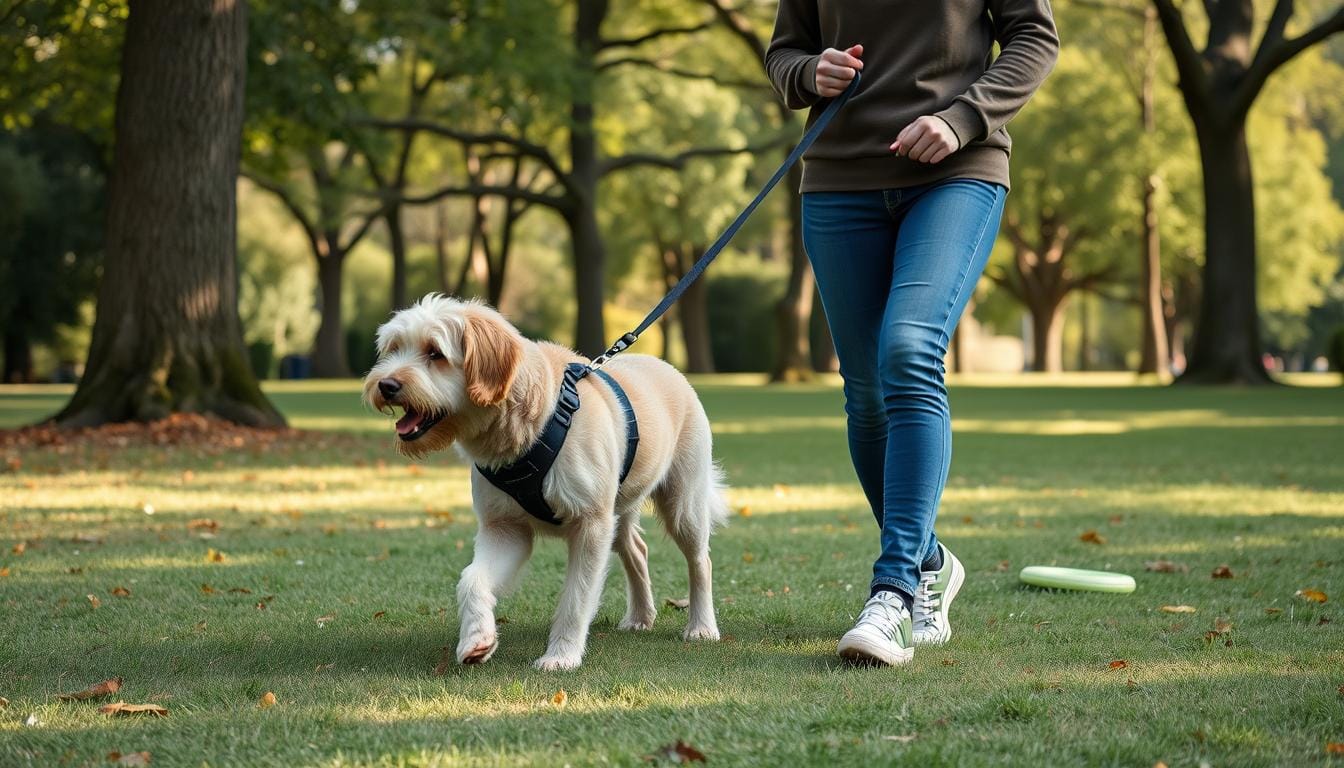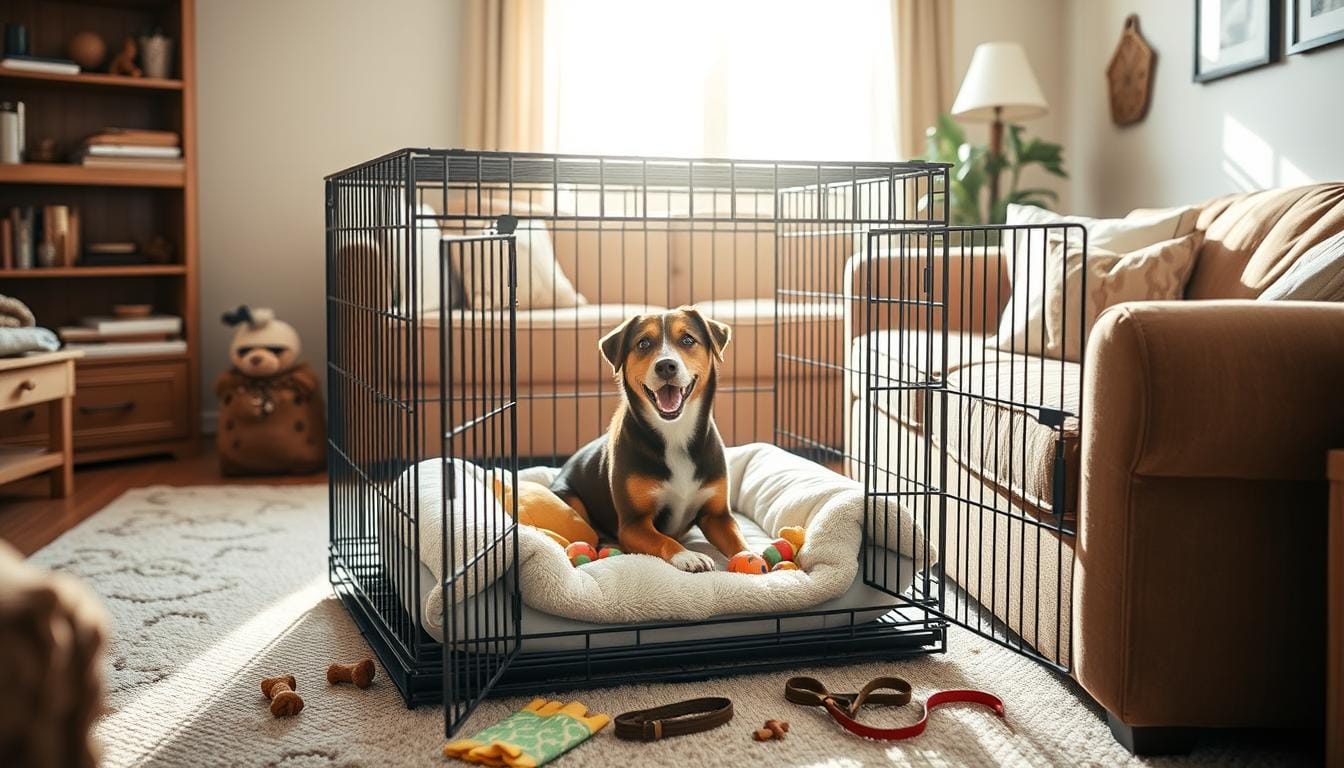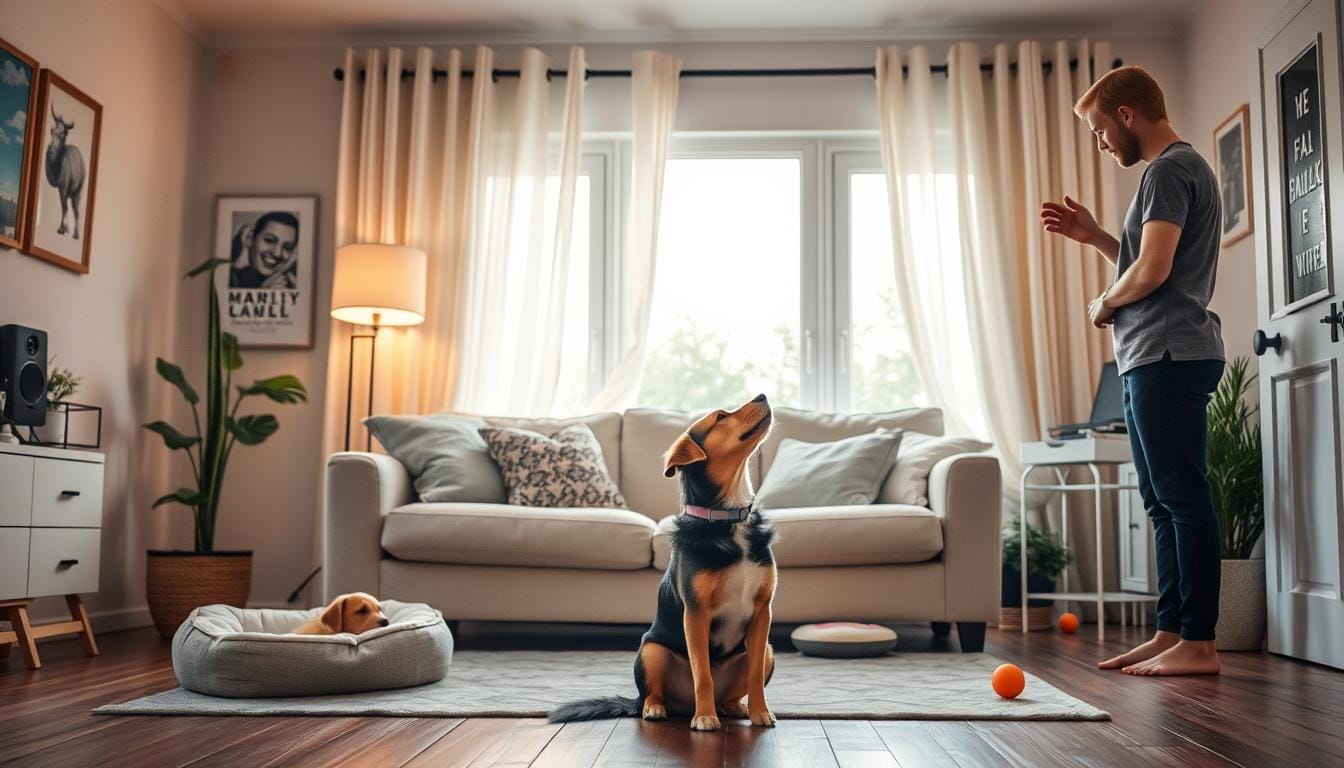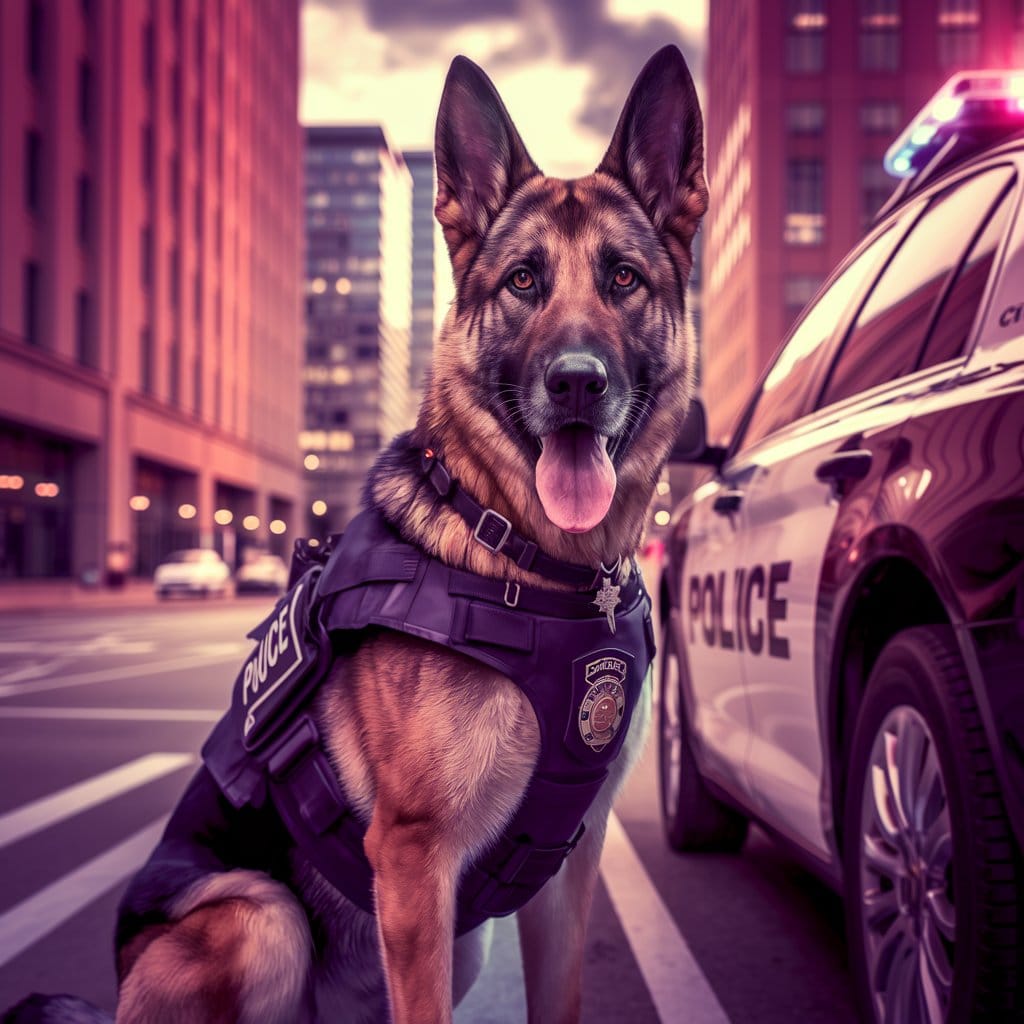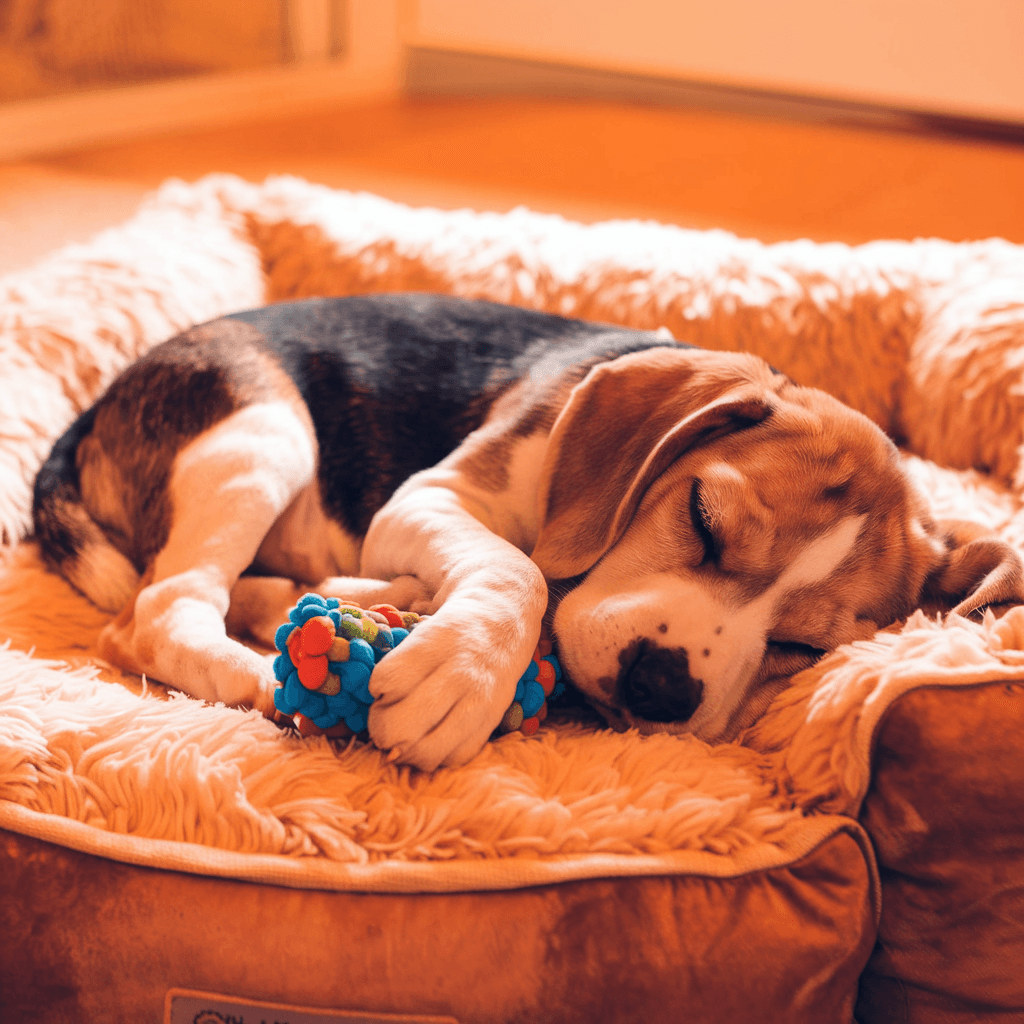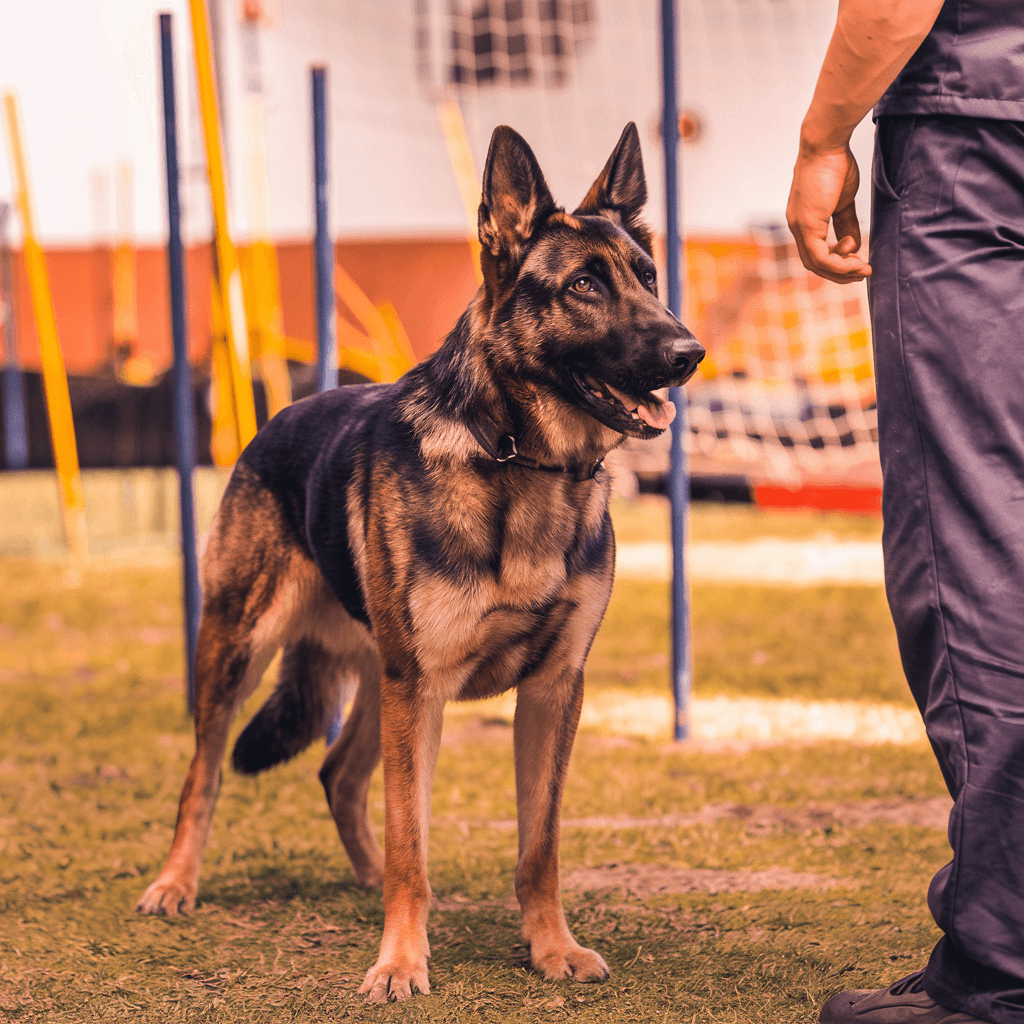Did you know dogs can sense human emotions instinctively? It’s true! Our canine companions can read our facial expressions and body language. They even sense changes in our scent.
Dogs communicate with us in many ways. They use tail wags, ear positions, and vocalizations. These behaviors show their emotional language, developed over thousands of years with humans.
Exploring canine emotions can deepen your bond with your dog. Regular pet grooming is key. It keeps your pet looking good and feeling happy and healthy.
Key Takeaways
- Regular dog grooming is essential for maintaining your pet’s health and well-being
- Proper grooming helps prevent bacterial infections and allows early detection of skin issues
- Grooming strengthens the bond between you and your dog
- Different dog breeds require specific grooming tools and techniques
- Professional groomers can spot potential health concerns during grooming sessions
- Consistent teeth brushing and nail trimming are crucial aspects of pet care
- Understanding your dog’s post-grooming behavior can help create a safer environment
Understanding the Importance of Dog Grooming
Dog grooming is key to keeping your pet healthy and happy. We’ll look at the many benefits of regular grooming. It’s a must for every dog owner.
Health Benefits of Regular Grooming
Regular grooming is great for your dog’s health. It lets their coat breathe and improves blood flow. Brushing keeps their coat clean and prevents mats that can hurt their skin.
Professional groomers can spot health issues early. This makes treatment easier and more effective.
Building a Stronger Bond with Your Pet
Grooming is a great way to bond with your dog. Regular brushing strengthens your connection. It’s a positive time for both of you.
It encourages good behavior and boosts your dog’s mental health. Start grooming early to make it a positive experience for your dog.
Preventing Potential Health Issues
Regular grooming prevents many health problems. Uncut nails can hurt your dog’s joints. Grooming lets you check for sores, fleas, and other issues early.
Different dogs need different grooming:
- Long-haired dogs need brushes with longer bristles and wide-toothed combs
- Short-haired dogs require short-bristle brushes and fine-toothed combs
- Double-coated dogs need daily grooming to prevent matting and maintain coat health
By grooming your dog right, you keep them healthy and happy. Regular grooming is an investment in your dog’s well-being. It’s a big part of being a responsible pet owner.
The Basics of Dog Grooming
Dog grooming basics are key to caring for our pets. We’ll look at essential grooming practices that keep our furry friends happy and healthy. From brushing to bathing, nail trimming to ear cleaning, each step is important for your dog’s well-being.
Regular brushing prevents matting, controls shedding, and keeps the coat shiny. How often you brush depends on your dog’s breed and coat type. Some dogs need daily brushing, while others groom less often.
Bathing is another important part of pet grooming. How often you bathe your dog depends on their breed and lifestyle. It’s important to use pH-balanced shampoos made for dogs to keep their skin and coat healthy.
Nail care is often overlooked but is crucial. Long nails can cause discomfort and affect your dog’s gait. Most dogs need their nails trimmed monthly.
Regular ear cleaning prevents infections and should be done monthly, or more frequently for breeds prone to ear issues.
Dental care is also a key part of dog grooming. Brushing your dog’s teeth daily helps prevent tartar buildup and keeps their mouth healthy. Many dog owners now use dog-specific toothbrushes and toothpaste.
| Grooming Task | Frequency | Owner Preference |
|---|---|---|
| Brushing | Daily to weekly | 47% use slicker brush |
| Bathing | Monthly to quarterly | 50% rise in dog-specific shampoo sales |
| Nail Trimming | Monthly | 45% increase in clipper sales |
| Ear Cleaning | Monthly | 72% prefer home grooming |
| Dental Care | Daily | 60% invest in dog dental products |
By mastering these pet grooming essentials, we ensure our dogs stay clean, healthy, and comfortable. Remember, consistent grooming not only improves your dog’s appearance but also strengthens your bond.
Brushing: The Foundation of Good Grooming
Dog brushing is key to good pet care. It keeps your dog looking good and healthy. Let’s explore the basics of this important grooming practice.
Choosing the Right Brush for Your Dog’s Coat
Choosing the right grooming tools is crucial for dog brushing. Each coat type needs a specific brush:
- Short-haired dogs: Bristle brush or rubber grooming mitt
- Medium-haired dogs: Slicker brush and metal comb
- Long-haired dogs: Slicker brush followed by a metal comb
Proper Brushing Techniques
Brush your dog gently, following the hair growth direction. This spreads natural oils, making the coat shine. Begin at the head and move down to the tail, focusing on matting areas.
Frequency of Brushing for Different Coat Types
Brushing frequency changes with coat type:
| Coat Type | Brushing Frequency |
|---|---|
| Short-haired | 1-2 times per week |
| Medium-haired | 2-3 times per week |
| Long-haired | Daily |
| Double-coated | More frequent during shedding seasons |
Brushing regularly lets you spot skin issues or parasites. For anxious dogs, keep grooming short and positive. Regular grooming strengthens your bond and keeps your pet healthy and happy.
Bathing Your Dog: Tips and Tricks
Regular dog baths are key to pet grooming. We’ve gathered essential tips to keep your furry friend clean and comfy. Knowing the right bath frequency for your dog’s coat is crucial for their skin and fur health.

Most dogs need a bath every month or two. Short-haired breeds might only need a few baths a year. Dogs that shed a lot should bathe monthly. Medium to long-furred dogs should bathe every 4 to 6 weeks.
Don’t overdo it, as too many baths can dry out their skin. When bathing, use gentle, pet-friendly shampoos and conditioners. This is crucial if you’re bathing your dog more often due to lifestyle or allergies. Make sure the water is comfy for your pup and avoid water in their ears and eyes.
Bathing Frequency by Coat Type
| Coat Type | Bathing Frequency | Special Considerations |
|---|---|---|
| Short-haired | Few times a year | Unless very dirty |
| Heavy shedders | Every 1-2 months | Helps with shedding |
| Medium to long fur | Every 4-6 weeks | Prevents matting |
| Dogs with allergies | As needed | Use vet-approved shampoos |
Using the right grooming tools can make bath time easier. Get specialized showerheads, ear cleaning solutions, and the right brushes for your dog’s coat. After bathing, dry your dog well with a towel to prevent cold or skin issues.
Nail Care: Keeping Paws Healthy
Proper dog nail care is vital for pet grooming. Regular nail checks can stop discomfort and health problems. Let’s look at how to keep your dog’s paws healthy.
Signs that Nails Need Trimming
Knowing when to trim your dog’s nails is crucial. Watch for these signs:
- Clicking sounds when your dog walks on hard surfaces
- Nails visibly extending beyond the paw pad
- Your dog’s paws splaying unnaturally
- Reduced traction or difficulty walking
Safe Nail Trimming Techniques
Safety is key in dog nail care. Here are tips for a safe trim:
- Use the right nail clippers for dogs
- Trim a little at a time to avoid cutting the quick
- Have styptic powder ready for bleeding
- Give your dog treats during and after the trim
Dealing with Anxiety During Nail Trims
Many dogs get anxious during nail trims. To ease their stress:
- Make the area calm
- Slowly get your dog used to nail handling
- Try a nail grinder for less stress
- Get professional help if anxiety is a big issue
| Nail Care Frequency | Percentage of Dogs |
|---|---|
| Every 4-6 weeks | 55% |
| More frequent (fast growth) | 20% |
| Less frequent | 25% |
Regular nail care is key for your dog’s health and happiness. If unsure, ask a groomer or vet for help.
Ear Cleaning: Preventing Infections
Proper dog ear cleaning is key in pet grooming. It stops infections and spots problems like ear mites early. Let’s explore why ear care is vital and how to do it right.

Dogs with floppy ears, like Cocker Spaniels and Basset Hounds, face more ear infections. This is because their ear canals are warm and moist. So, cleaning their ears regularly is a must for these breeds.
When cleaning your dog’s ears, gently wipe the ear flaps. Don’t put anything in the ear canal. Use a safe ear cleaning solution if needed. Cotton tip applicators can push debris deeper or hurt your dog’s ears.
- Look for signs of redness, swelling, discharge, or odor
- Clean ears as recommended by your vet, especially if your dog has allergies
- Don’t over-clean, as it can cause irritation
If you see unusual odors, discharge, or discomfort, see your vet fast. They can diagnose and treat any issues.
“Regular ear examinations at home are crucial for maintaining your dog’s ear health and catching potential problems early.”
If you’re not sure about ear cleaning, get help from a pet groomer. A clean ear means a healthy dog. Ear care is a big part of keeping your dog healthy.
Dental Care: Maintaining Oral Health
Dog dental care is key to pet oral hygiene but often ignored. Many owners don’t see its importance until problems start. Let’s look at why dental care is vital and how to keep your dog’s teeth healthy.
Importance of dental hygiene for dogs
By age three, most dogs show signs of canine periodontal disease. This can cause tooth loss, painful abscesses, and systemic infections if untreated. Long-term disease can damage the jaw and increase heart disease risk.
Brushing techniques and frequency
Daily brushing is best, but any brushing is better than none. Use dog-specific toothpaste in flavors like chicken or peanut butter. For dogs that don’t like brushing, dental wipes are a good option. Here’s a quick guide to brushing your dog’s teeth:
- Choose a quiet time and place
- Let your dog taste the toothpaste
- Gently lift the lip to expose the teeth
- Brush in circular motions, focusing on the gum line
- Reward your dog after brushing
Dental treats and toys for oral health
Dental treats and chew toys can help with oral care. They scrape plaque off teeth and stimulate gums. Here’s a comparison of popular dental care options:
| Method | Effectiveness | Frequency |
|---|---|---|
| Brushing | High | Daily or several times a week |
| Dental Wipes | Medium | Daily |
| Dental Treats | Medium | Daily or as recommended |
| Chew Toys | Low to Medium | Available at all times |
Remember, professional dental cleaning by a vet is crucial for oral health. By adding these practices to your pet care routine, you can prevent dental problems and keep your dog healthy.
Dog Grooming: Professional vs. At-Home Care
Choosing between professional dog grooming and at-home care is a big decision. Both have their good points, and the best choice depends on several factors.
Professional groomers bring expertise and special tools to the table. They know how to handle different coats and give care that fits your dog’s breed. They also keep an eye out for health problems during grooming.
At-home grooming can save money for some owners. It lets you groom your dog more often. It also reduces stress for dogs who don’t like new places. But, you need the right tools and know how to groom correctly.
“Finding the right balance between professional and at-home grooming can lead to optimal results for your dog’s health and appearance.”
Let’s look at the differences:
| Aspect | Professional Dog Grooming | At-Home Dog Grooming |
|---|---|---|
| Expertise | High level of skill and experience | Varies based on owner’s knowledge |
| Equipment | Professional-grade tools | Basic grooming kit |
| Cost | Higher per session | Lower long-term cost |
| Frequency | Every 2-6 weeks, depending on breed | Can be done more frequently |
| Stress on Dog | May be higher in unfamiliar environment | Often lower in familiar surroundings |
For the best results, mix professional grooming with regular at-home care. This way, your dog gets expert care and you can bond through grooming at home.
Grooming Tools and Products: What You Need
Having the right dog grooming tools and pet grooming products is key to keeping your pet healthy and looking good. We’ll show you the basics every dog owner needs. We’ll also help you pick safe, effective items for your grooming kit.
Essential Grooming Tools for Every Dog Owner
A good grooming kit has brushes for your dog’s coat type, nail clippers, ear cleaning stuff, and dental care items. For different coats, here are some tools to consider:
- Smooth/Single-Coated: Bristle brushes
- Double-Coated: Slicker brushes and undercoat rakes
- Long/Drop-Coated: Pin brushes and detangling combs
- Curly-Coated: Slicker brushes and metal combs
Choosing Safe and Effective Grooming Products
When picking grooming products, focus on safety and effectiveness. Choose hypoallergenic, plant-based items like Earthbath grooming wipes for quick clean-ups. For shampoos and conditioners, find ones made for your dog’s coat and skin type.
| Tool Type | Recommended Product | Key Feature |
|---|---|---|
| Brush | Hartz Groomer Combo Pet Brush | Dual-sided design for detangling and oil distribution |
| Nail Care | Bissell Dog and Cat Nail Clippers | Angled safety guard for sensitive nails |
| Ear Cleaner | Virbac Advanced Ear Cleaner | Gentle and effective, veterinarian-recommended |
| Dental Care | Vet’s Best Dog Toothbrush & Enzymatic Toothpaste Set | Freshens breath and promotes oral hygiene |
Storage and Maintenance of Grooming Supplies
Keeping your grooming tools in good shape is important. Clean and dry them after each use. Store brushes and combs with bristles up to keep them straight. Clean clippers and scissors often to stop bacteria growth. Taking care of your grooming tools means better care for your pet and longer tool life.
Dealing with the “Zoomies” After Grooming
Ever seen your dog zoom around like a tornado after a bath? This is called post-grooming zoomies. It’s a common behavior that surprises many pet owners. Let’s explore what causes these energy bursts and how to keep your dog safe.
Zoomies, or Frenetic Random Activity Periods (FRAPs), are sudden energy bursts in dogs. They might run in circles, take laps around the yard, or spin around. Zoomies can happen anytime, but they’re more common after grooming.
So, why do dogs get zoomies after grooming? It’s often a way to release built-up energy or stress from grooming. Some dogs might feel uneasy during baths or trimming and use zoomies to shake off that feeling. Others might be trying to dry off or get their scent back after being washed.
“Zoomies are a natural way for dogs to release excess energy. It’s generally harmless, but we need to ensure their safety during these episodes,” says Paige Chernick, Senior Vice President of Communications at PRIDE+GROOM.
To keep your dog safe during post-grooming zoomies:
- Create a safe environment free of obstacles
- Use non-slip mats to prevent slipping on wet floors
- Consider exercising your dog before grooming to reduce excess energy
- Monitor your pet closely to prevent any potential injuries
Remember, zoomies are usually harmless and can be fun to watch. But, if your dog shows unusual behavior after grooming, it’s wise to talk to a vet or animal behaviorist.
| Zoomie Triggers | Prevention Tips |
|---|---|
| Stress from grooming | Use treats and praise during grooming |
| Discomfort from water in ears | Dry ears thoroughly after bathing |
| Excess energy | Exercise before grooming session |
| Desire to dry off | Use a dog-specific towel for drying |
Conclusion
We’ve looked at important dog grooming tips for pet care. Regular grooming does more than make your dog look good. It keeps their skin and coat healthy, prevents matting, and cuts down on allergens at home.
Our grooming tips cover bathing, brushing, oral care, ear cleaning, and nail trimming. Professional groomers bring special skills, especially for certain breeds. They can spot health problems early. But, whether you go to a pro or groom at home, being consistent is crucial.
Remember, too much bathing can take away natural oils. So, finding the right balance in your grooming routine is key. By following these grooming tips, you’re not just keeping your dog clean. You’re also building a stronger bond and catching health issues early.
As more people see the value of quality grooming, they’re making it a priority. Your grooming efforts play a big role in your dog’s happiness and health.







